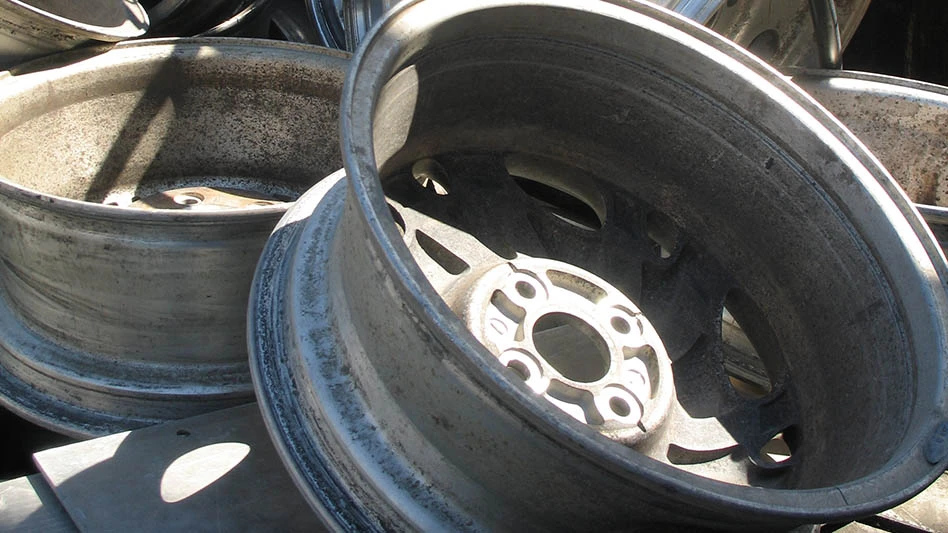 George Boehm has seen a lot of changes to the Pittsburgh landscape over the years, many of which he is responsible for. He has spent more than four decades working on demolition projects in and around Pittsburgh that have forever changed the look of the city: the Jenkins Arcade, the Jail Annex and the Bloomfield Bridge, to name a few.
George Boehm has seen a lot of changes to the Pittsburgh landscape over the years, many of which he is responsible for. He has spent more than four decades working on demolition projects in and around Pittsburgh that have forever changed the look of the city: the Jenkins Arcade, the Jail Annex and the Bloomfield Bridge, to name a few.
But Boehm, the vice president of Noralco Corp., recently completed a project that perhaps has made the biggest impact yet on the Pittsburgh skyline. The Civic Arena was a Pittsburgh landmark for more than half a century. It entertained crowds for countless concerts and events and was the home of the Pittsburgh Penguins NHL Team. Its distinct dome shape gave it the nickname “the Igloo” by hockey fans as it played host to many games and winning plays by hockey greats like Mario Lemieux. But like many arenas that stand for decades, the building had become outdated. And when the Sports & Exhibition Authority (SEA) and the Penguins organization decided to demolish the iconic arena, it was met with some local opposition.
Razing the Roof
Demolition began in the fall of 2011 under the supervision of Boehm and superintendents John Mullen and Michael Tomasits, both of Noralco. First, crews gutted the inside of the arena and removed the asbestos-containing material and the seating. Crews spent much of the winter of 2012 taking down the roof of the arena, which was one of the most challenging aspects of the demolition.
Both Boehm and the project’s structural engineer, Bud McCutcheon of KU Resources Inc., Duquesne, Pa., say the architecture of the arena, which was built between 1958 and 1960, was ahead of its time. The arena was built so well, in fact, that the building didn’t always want to cooperate with the demolition process.
“It is a well-built structure that structurally compensates,” McCutcheon comments. “For everything that we do to it, it has an answer.”
|
Black, Gold And “Green” Across the street from where the old Pittsburgh Civic Arena stood is the new home of the Pittsburgh Penguins NHL hockey team, the Consol Energy Center. The arena, which opened in time for the 2010-2011 NHL season, already is going down in history as the first NHL arena to achieve Leadership in Energy and Environmental Design (LEED) Gold Certification from the U.S. Green Building Council. According to a news release issued by the Penguins and the Sports & Exhibition Authority in August 2010, the project received high marks for recycled materials, demolition and construction waste diversion, water use reduction, regional materials, certified wood and energy efficiency. When the news of the LEED Gold Certification was announced, Pittsburgh Mayor Luke Ravenstahl observed, “As we get ready to celebrate the grand opening of Consol Energy Center, this announcement will send the message to residents and Penguins fans at home and across the world that we are indeed a black, gold and green city.” |
Boehm reiterates that sentiment, “We have to think of something [building engineers] didn’t think of.”
An estimated 300,000 pounds of stainless steel covered the roof of the arena, which consisted of eight panels that were referred to as leaves because of their shape. Six of the leaves were movable and two were fixed. Each leaf was supported in the middle by two center pins. This is what allowed the roof to open and close. The movable panels could slide open and rest under the fixed panels.
Crews took down the roof one leaf at a time, cutting beams with shears.
“The first drop went perfectly,” says McCutcheon. But during Round Two, the center section of one of the leaves jumped up in the air rather than coming straight down as expected.
“It caused us a little grief,” says Boehm. “It’s nothing that can’t be overcome. It just changed the plans for that particular leaf of the building. As far as the rest of them, they will go the same as the first one. We just didn’t expect that jump up.”
The bolts were cut off the fixed panels and chunks of bar were strategically cut out. Boehm estimates 800 tons of steel fell to the ground in one shot. Boehm says that air displacement slowed the velocity of the drop so that it didn’t even register on the on-site seismographs.
Planning for the Unexpected
For the dozens of demolition jobs Boehm leads each year, he says, “I have to think of the things that are going to happen at a building that no one else has thought of.
“It keeps you on your toes,” he continues. “You don’t fall asleep when you’re tearing a building down.”
Boehm, who says he was hired off the street and worked his way up through the ranks at Noralco, learned early on that the good owners and vice presidents of demolition companies didn’t spend their time sitting in an office. “Everybody is hands on,” he observes. “The more dangerous the situation is, the more I want to be right there.”
Boehm wants to ensure needed cuts are made exactly right. “You can’t do that by sitting in an office or standing on the ground,” he emphasizes.
Noralco has developed a reputation around Pittsburgh for being able to handle the out-of-the-ordinary demolition jobs. “I have a knack for getting the jobs that no one else has ever done,” says Boehm. As one example, the company completed what he calls the first-ever demolition of a nuclear power plant in Shippingport, Pa., in the late 1970s.
Noralco celebrated its 60th year in business in April 2012. A charter member of the National Demolition Association (NDA), Doylestown, Pa., Noralco also was an early adopter of LEED (Leadership in Energy and Environmental Design) practices, Boehm says.
|
Charitable Recycling Steel recovered from demolition sites is typically melted down and made into a multitude of different products, but leave it to The Steel City to come up with a charitable way to recycle steel and give it back to the community. Wendell August Forge, with retail locations in Pennsylvania and Ohio, produces handcrafted metal keepsakes. The company used stainless steel, recovered from the roof of the Pittsburgh Civic Arena, to make Christmas tree ornaments. One of the ornament designs features an image of the iconic Civic Arena and the Pittsburgh skyline. The other design features an image of the arena and the Pittsburgh Penguins’ logo. All proceeds from the sale of the ornaments benefit the Pittsburgh Penguins Foundation youth charities. More information on the foundation is available online at www.pittsburghpenguins |
He adds, “When LEED first started, we actually helped educate one of the bigger companies out here, PJ Dick, as to how to do the projects.”
Noralco also completed excavation and demolition on the site now occupied by the Civic Arena’s successor, Consol Energy Center. That project achieved LEED Gold Certification. (See sidebar “Black, Gold and Green” above)
Focused on Recycling
The Civic Arena demolition project had a recycling target of 95 percent. Boehm says Noralco actually surpassed that. “Our recycling rate is somewhere between 97 and 98 percent,” he says. “You can’t get much better than that.”
Boehm estimates that 300,000 pounds of stainless steel and 5,000 tons of steel were recovered from the site. The stainless steel was removed from the roof and has been sold to a forging company where it was made into souvenir Christmas ornaments, with proceeds going to charity. (See “Charitable Recycling” sidebar)
The concrete was crushed and recycled on site as infill for the residential and commercial buildings that will eventually be built on the 28-acre property.
More to Come
Boehm hopes Noralco will continue to be Pittsburgh’s go-to demolition contractor for the tough jobs. “It’s the excitement of the job, the adrenaline rush, the challenge that you are going to do something that no one else has ever done, the reputation we have of being the best,” Boehm reflects, “and we like to keep that tradition going on.”
The Penguins took possession of the demolished lot in August. Noralco’s contract with the organization was extended so the company could do additional prep work at the site. Its work was officially complete July 31.
“We are making a parking lot out of recycled asphalt and crushed concrete,” Boehm says of the additional work. “We are bringing in 400 tons of milled asphalt to be used and 6 inches of recycled concrete to be put down as sub-base.”
Boehm says that the Civic Arena demolition project benefitted the city in many ways, including through employing a local company, generating proceeds for charity and reusing and recycling materials. “It is a high-profile job and everything went pretty smoothly. Everyone was very happy with the way it turned out as far as recycling and as far as helping the community,” Boehm adds.
The author is managing editor of Construction & Demolition Recycling, a sister publication of Recycling Today, and can be reached at ksmith@gie.net.
A video report of the Pittsburgh Civic Arena demolition is available at www.RecyclingToday.com/pittsburgh-civic-arena-demo-video-2012.aspx.

Explore the September 2012 Issue
Check out more from this issue and find your next story to read.
Latest from Recycling Today
- RMDAS April figures show recycled steel price setback
- Steer World offers PEX plastic recycling machine
- New recycling grant program launches in Massachusetts
- Tire Recycling Foundation names executive director
- Dock 7 named 2025 Exporter of the Year at New Jersey International Trade Awards
- Waste Connections reports ‘better than expected’ Q1 results
- Commentary: How EPR is transforming the packaging industry
- Acerinox names new North American Stainless CEO





